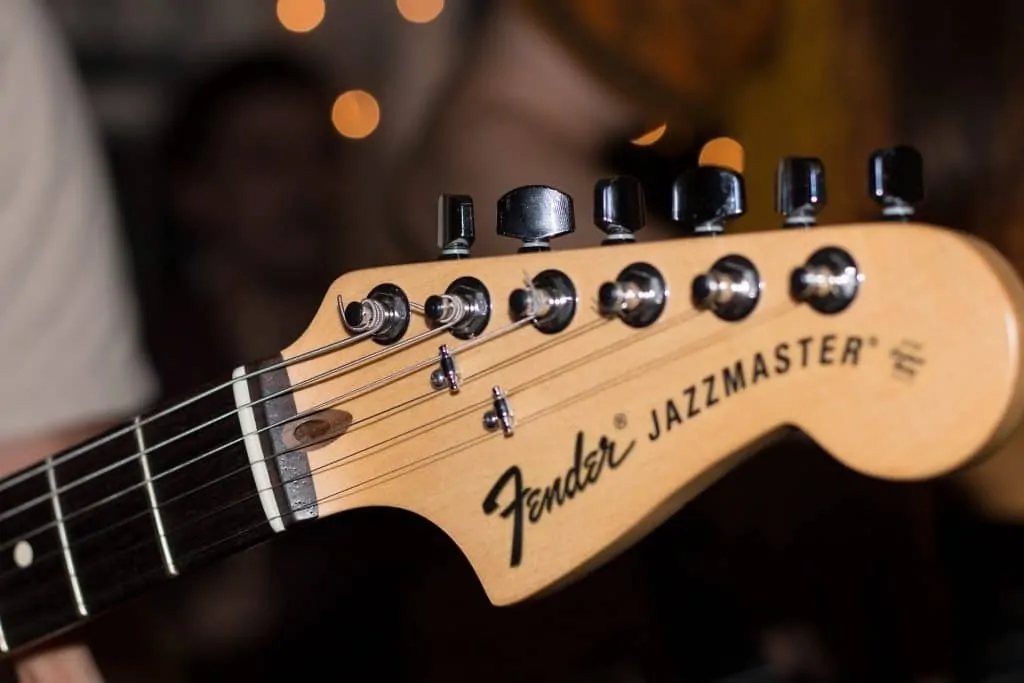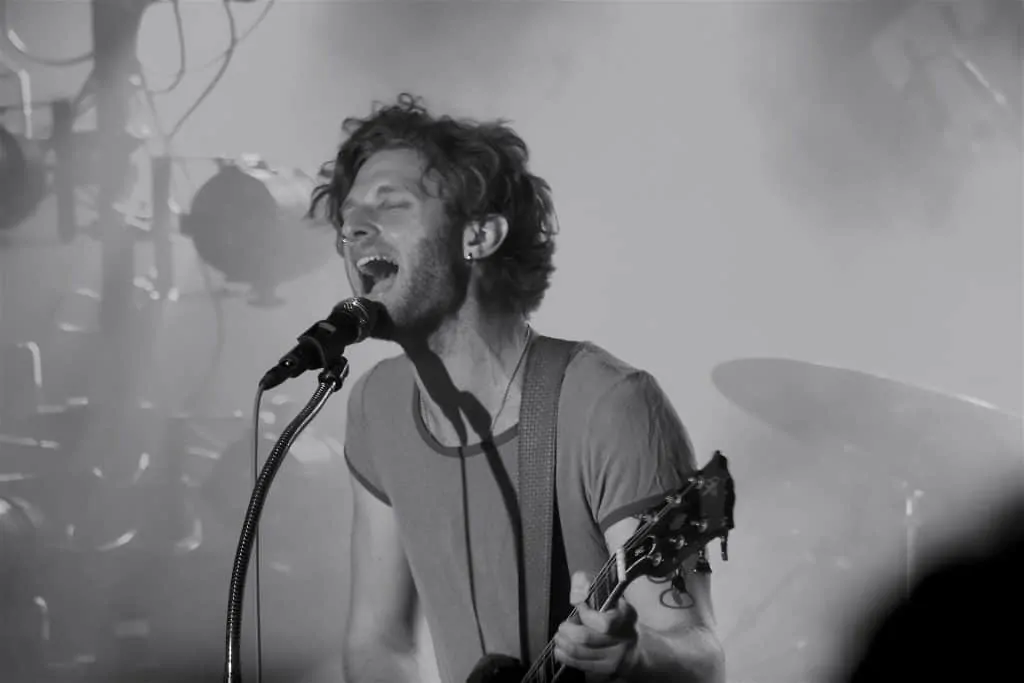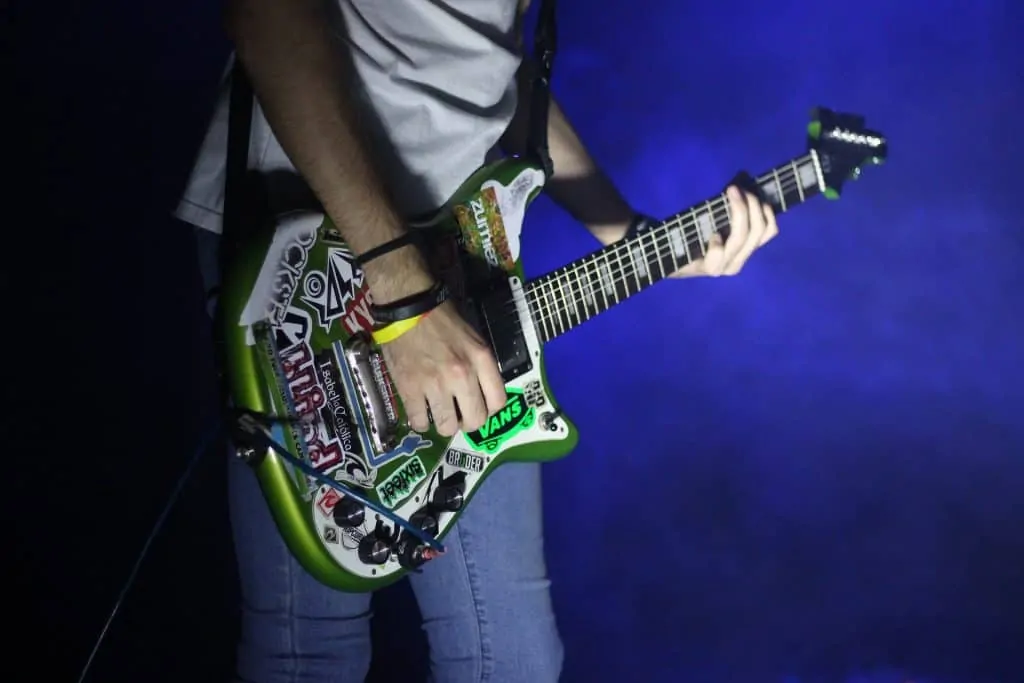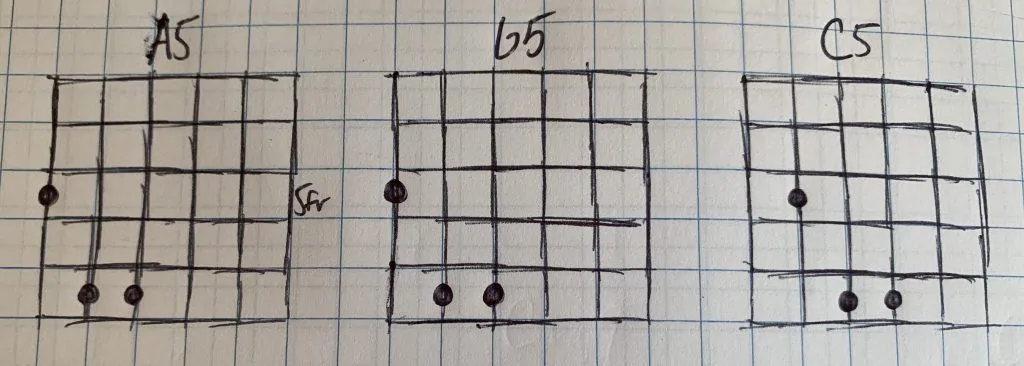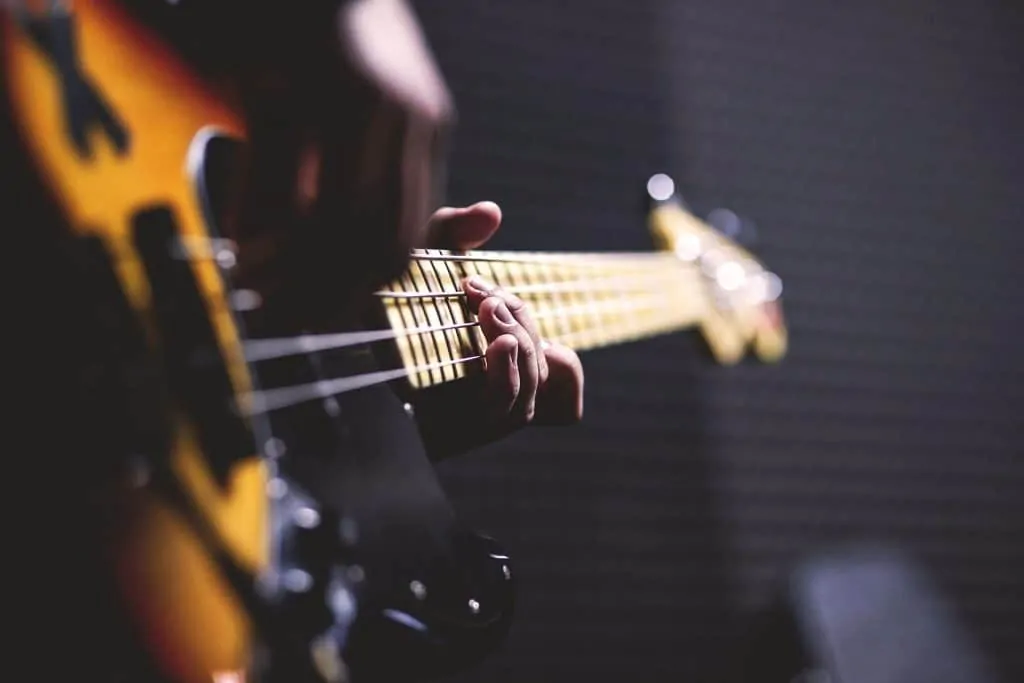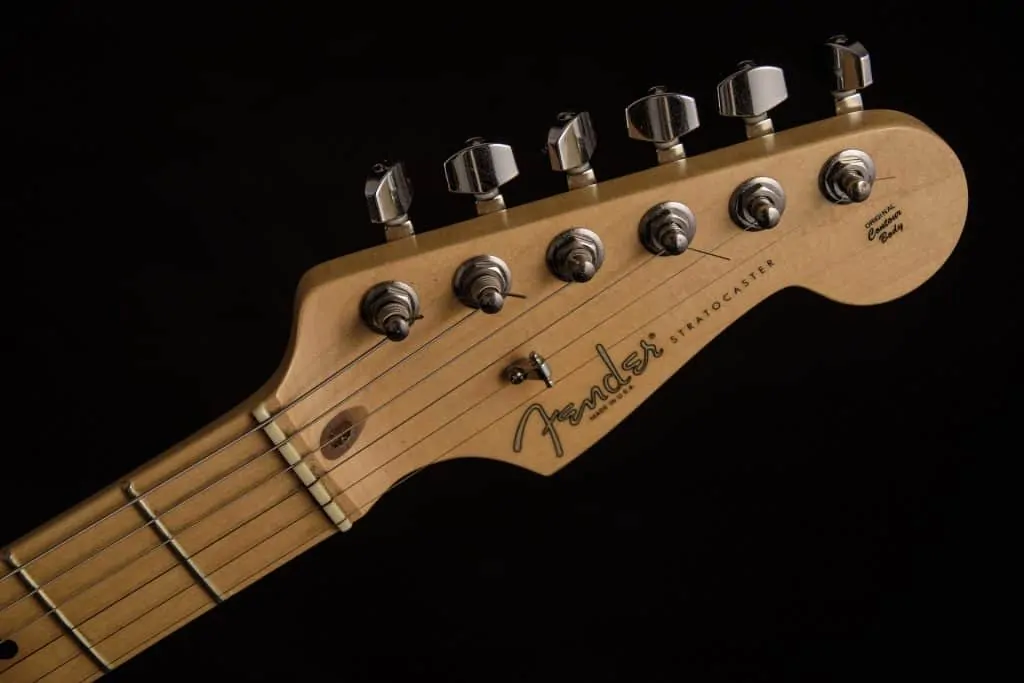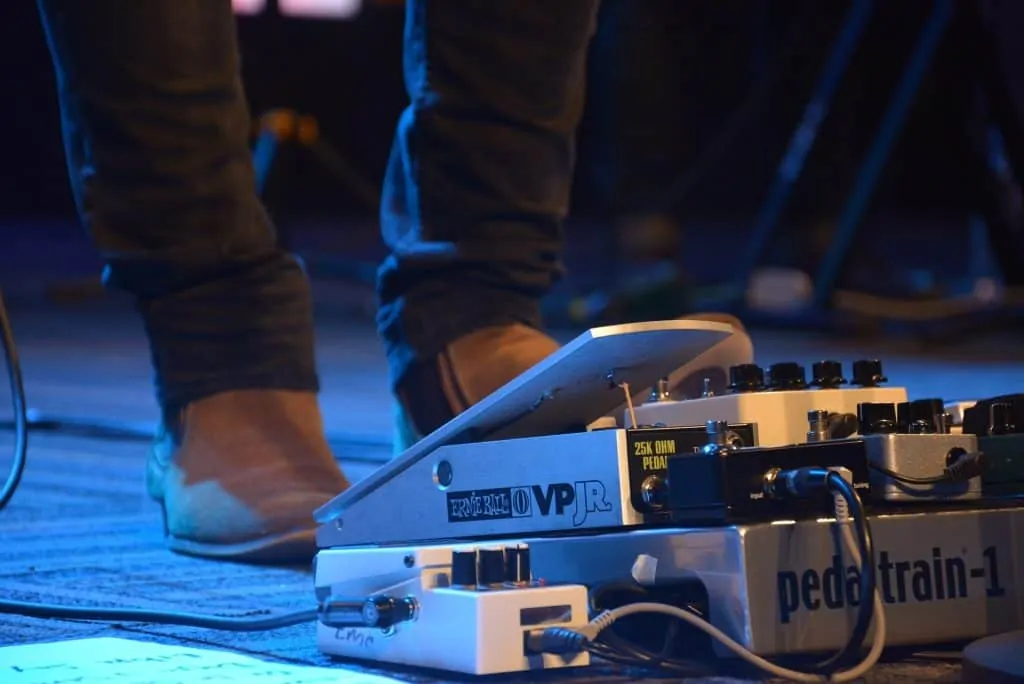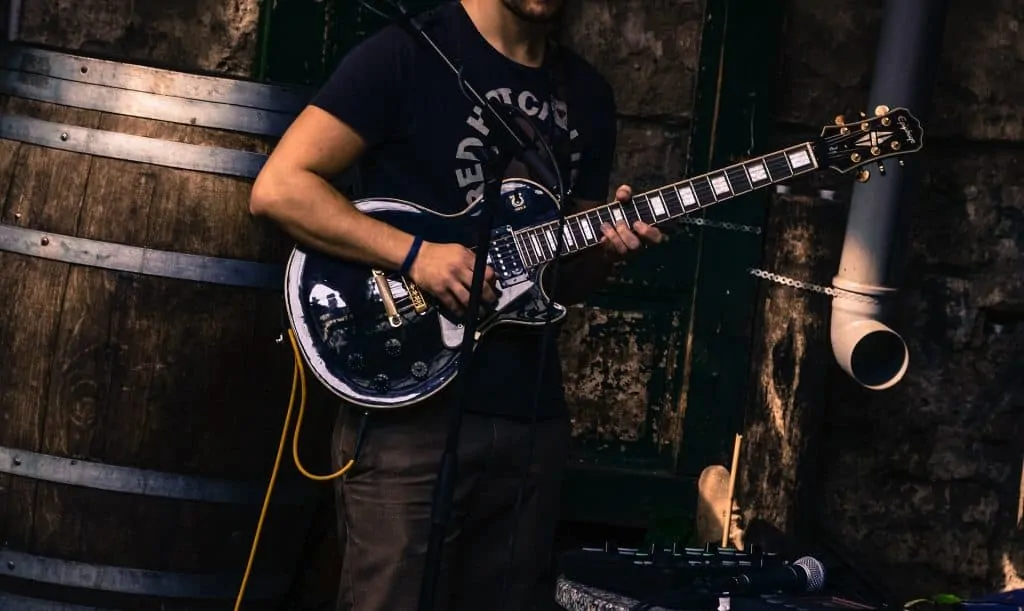From its roots in the Pacific Northwest of the late 1980s, grunge exploded to become the defining sound of the 1990s. And while bands like Nirvana, spearheaded by the legendary Kurt Cobain, may dominate the popular concept of grunge, the genre itself runs much deeper.
It’s relatively easy to pick up grunge; the heavy emphasis on power chords and simplified chord structures shortens the learning curve for beginner players and keeps the genre accessible to nearly any guitarist interested in playing it. However, true grunge is a hard genre to master! The rhythm, feel, and tone are difficult even for professionals to nail.
Grunge guitar is characterized by the overdriven sound of Fender guitars, especially Jazzmasters and Jaguars.
Contents
Characteristics of Grunge Guitar
As mentioned above, the music of Nirvana is many people’s first and only concept of the grunge genre. But other Seattle groups like Pearl Jam, Soundgarden, Mudhoney, Alice in Chains, and The Melvins are all traditionally categorized under the “grunge” label as well.
Though many of these acts have put their own spin on the central style, grunge is typically characterized by the use of extreme distortion and fuzz effects, simple, dirty power chords, and straightforward, driving rhythm that propels the song forward. The genre initially evolved out of slow, dirgelike tunes but quickly grew to encompass more uptempo, passionate songs as well.
Most observers describe the grunge genre as a fusion of punk rock sensibilities and lyrics with heavy metal style and distortion.
The power chord structures and bombed-out fuzz levels are all influences from heavy metal. Yet where 1980s metal emphasized uptempo beats and songs centered around blistering solos, grunge shifted the focus to a darker, slower interpretation. And while many metal guitarists generate distortion from both their amps and additional pedals, grunge guitarists prefer to leave their amps clean and generate their signature distortion solely from an array of pedals.
Grunge also shares punk rock’s expressive, intense songwriting and lyrical fascination with current culture and events — in many ways, grunge songs serve as a vehicle for the message contained in the lyrics. The general distaste for guitar solos found in grunge is another reflection of those punk rock sensibilities. Yet as the genre developed, grunge players embraced the arena scene in a way punk rockers never did.
Learning to play grunge guitar requires a strong grasp of power chords and rhythm structures. Because much of traditional grunge de-emphasizes melody in favor of sturdier lyrical content, the ability to add solo lines on guitar isn’t as important. However, without a strong vocal melody to lock into for many grunge songs, it’s absolutely essential to maintain an even tempo and a traditional grunge groove without faltering.
One of grunge’s signatures is the foggy, thick distorted guitar sound. Unlike distortion in rock and metal, which is often used to cut through a mix and create a more in-your-face sound, grunge uses distortion to create a wall of heavy fuzz. Most grunge guitarists use multiple effects pedals to achieve this distinctive sound; oftentimes they also roll much of the treble off their guitars and boost the midrange frequencies on their amps.
Grunge borrows heavily from the punk movement in playing style as well as attitude and lyrics. Like in original punk rock, grunge guitarists tolerate a greater measure of sloppiness or lack of professionalism than other musicians might in order to add to the lo-fi, unadulterated vibe.
That’s not to suggest that grunge musicians are simply worse players than guitarists in other genres; it’s simply an artistic choice to convey more raw spirit and emotion in the finished musical product rather than polishing out the mistakes. If there’s one adjective nobody has ever used to describe grunge music, it’s “sterile.”
Most famous grunge guitarists arose out of the Pacific Northwest in the late 1980s and early 1990s.
Famous Grunge Guitar Players
Many musicians credit Seattle band Mudhoney with kicking off the grunge genre. Led by guitarists Mark Arm and Steve Turner, the band’s 1990 EP SuperFuzz BigMuff created a ripping, growling distorted guitar sound that would later become the signature of grunge.
Other Pacific Northwest guitarists like Mike McCready of Pearl Jam, Jerry Cantrell of Alice in Chains, and Chris Cornell and Kim Thayil of Soundgarden rose to prominence as grunge grew in popularity across the country. They built on the distortion and sludge pioneered by Mudhoney while adding in more complex rhythms and, eventually, solos.
But in the annals of grunge, no figure stands out more than Nirvana guitarist Kurt Cobain. Cobain’s expressive, hard-nosed style fused grunge with melodic elements borrowed from pop and rock and roll. While he was certainly not a virtuoso guitar player, and eschewed complex playing for simple power chords without many lead lines, he became known for conveying outsized amounts of emotion and rhythm with just a few strums.
Ever since the breakup of Nirvana, many indie fans and players have pointed out that Kurt Cobain’s music with the group shared little in common with the late-1980s music the grunge genre originated from. And while it’s true that Nirvana’s music often flies in the face of traditional grunge “standards” and is even not considered grunge by some devotees, Nirvana’s work has become inextricably entwined with the concept of grunge music in the public consciousness.
Grunge guitar incorporates a lo-fi aspect into the music as well as the gear.
Chords and Melody
Grunge music revolves almost exclusively around the power chord. These three-note shapes form the basis of music from Nirvana to Mudhoney, Pearl Jam, and Soundgarden.
Power chords are unique among all other chords for a number of reasons. Standard power chords, while played across three strings, only contain two notes — the root and the fifth. The simplicity sets them apart from full barre chords and helps them pop out on records; listeners only need to discern two different notes in a power chord, far from the five or more unique sounds found in some jazzy extended chords. That in-your-face power suits the grunge guitar style perfectly.
Major and minor chords are built around the interval between the root note and the third. Major chords feature a major third (an interval with four half steps in between the two notes) while minor chords have a minor third (only three half steps in between). Power chords only contain the root and the fifth, which are notes found in both major and minor chords. Because they lack a third, power chords are therefore neither major nor minor. While not as sad as true minor chords, power chords sound darker and more melancholy than major chords — the perfect mix for styles like grunge.
Diagram showing the most common shapes to play power chords with the root note on both the sixth and fifth string.
Basic power chords often use only the lowest three strings on the guitar. By cutting out the treble strings altogether, power chords sound much more muscular than comparable barre chords, especially when played with loads of fuzz and distortion. Grunge guitarists prize the sludgy, heavy sound power chords can create.
In keeping with the liberal use of power chords — some of the simplest chords in existence — grunge music features plenty of simple chord progressions. The simplicity isn’t necessarily indicative of a lack of creativity or guitar playing skills. Rather, many grunge artists deliberately created basic chord progressions to serve as a vehicle for more intricate lyrics.
Nirvana songs in particular are known for their straightforward chords — most tunes used only four or five chords between the verse and chorus and maintained one rhythm throughout the song. For example, “Lounge Act” uses just five power chords throughout the song: B, G, C, E, and A. “Come As You Are,” meanwhile, uses just an F#m, E, A, B, and D.
In keeping with the simple chords, grunge melodies are generally accessible and straightforward. Most songs also follow a standard verse-chorus structure, with few alterations or changes to the melody throughout.
The pentatonic scale contains most grunge melodies. Some vocalists, like Pearl Jam’s Eddie Vedder, may introduce more bluesy inflections into their singing than others. When played on guitar, however, grunge melodies generally don’t feature similarly heavy blues influences.
Rhythm in grunge incorporates heavy, pulsing bass guitar.
Rhythm
Grunge rhythm is built mostly around the interplay between the different power chords. The vast majority of songs are played without swing in a straight 4/4 time signature, with a combination of both down- and upstrums anchoring the groove.
While occasionally uptempo grunge songs like Nirvana’s “Breed” will utilize sixteenth-note downstrokes, most songs use wider, more open strums rather than tightly focused metal-style picking. Grunge guitarists are also noted for a looser, less controlled strumming technique that often catches unintentional open strings or mutes some strings in a chord.
It can be hard to develop a grunge touch without simply sounding bad — because most grunge guitarists naturally developed their playing with a sloppy feel, it’s hard to practice without sounding forced or pained. To try and emulate the technique, it may be helpful to change your hand position and not place as much emphasis on which strings your strumming hand catches during each strum.
Palm muting isn’t an a critical technique for grunge rhythm, but it can be helpful to approximate a dampened sound, especially if you’re looking for rhythmic, percussive muted strums. Resting your hand lightly across the strings as you play is another technique for creating a one-of-a-kind partially muted feel.
Traditional guitar solos are uncommon in grunge music.
Solos (Or Lack Thereof)
As with some other genres that came of age in the wake of classic rock and metal, improvised soloing is a focus of debate in grunge music. “Traditional” grunge guitarists often look down on solos, especially complex ones. The punk rock ethos that pervades much of classic grunge dictates that solos detract from the lyrical message and from the song’s force.
Some artists favor a sort of middle ground, placing breaks for solos in their songs but either simply playing the vocal melody on their guitar or intentionally playing dissonant, piercing notes. Kurt Cobain is one of the main proponents of this strategy; on Nirvana’s records he tended to play the vocal melody through instrumental breaks, while live he would pick random notes on his guitar or run around the stage rather than play a solo.
The above video of Cobain’s solo from “Breed,” during Nirvana’s 1991 performance at the Paramount Theater, is a great example of this classic grunge technique. While technically this may qualify as a guitar solo, rather than playing single note lines Cobain opts to violently strum a couple of chords high up on the neck. The combination of muted strings and shrill feedback mixed in with the ringing notes adds to an already potent mix to create a dynamite instrumental break.
Other guitarists, like Soundgarden’s Kim Thayil and Pearl Jam’s Mike McCready, have readily incorporated more advanced solos into their songs. Though rapid, shred-style solos are still uncommon — and many of the artists who play them are more rockers than grunge artists — they do exist in certain instances.
Mike McCready’s solo in Pearl Jam’s “Alive” stands out in the grunge genre for its length as well as its complexity. Though the pentatonic emphasis and blues notes are more traditionally identified with classic rock than with grunge, this solo displays how some artists merge more intricate solo work into otherwise straightforward grunge songs.
Modal soloing and seventh arpeggios are exceptionally uncommon in grunge; nearly all solos will revolve around the same pentatonic and blues vocabulary demonstrated in “Alive.” When learning how to solo over grunge songs, you’ll just need to know the pentatonic scale and the chords you’re playing over. Depending on your style, you may also want to learn how to create feedback with your instrument while playing.
Successfully producing and manipulating feedback is more of an art than a science — and there’s a thin line between cool, artistic feedback and ear-splitting noise! Grunge players use plenty of effects and lots of gain, which gives them an edge for creating feedback. If you want to try yourself, tur up the gain and volume on your amp and guitar and experiment standing in different positions near your amp. If you don’t get a controllable feedback sound even with the volume cranked, plugging in some distortion and compressor pedals may help. Just be careful not to turn up too loud or keep the feedback going for too long or you risk complaints from your neighbors!
Guitars with single-coil pickups are popular in grunge music, particularly Fender models.
Classic Grunge Guitar Models
Grunge evolved out of the 1980s music scene, when Marshall amps and neon superstrat guitars were all the rage in the metal and hard rock scene. Rather than follow the crowd, many beginning grunge musicians opted to purchase older, less common guitars from pawn shops and bargain dealers. Some of the most famous grunge guitars of all time were initially selected because of their low price and unique counterculture style.
Fender guitars, particularly the company’s offset models, were the defining instruments of the grunge era. Kurt Cobain most famously played a left-handed Jaguar, while J Mascis of grunge rockers Dinosaur Jr was known for playing a Jazzmaster.
The additional tonal controls and multiple circuits found in Fender offset guitars made them an appealing alternative to the straightforward humbucker setups found in many “classic rock” guitars, like the Gibson Les Paul and loads of different superstrat models.
Originally a model aimed at providing new and improving players with a practice instrument, the Fender Mustang also saw a revival after its adoption by grunge and alternative rock players like Kurt Cobain, Black Francis, and Thurston Moore. The Mustang offers rugged, lo-fi tones through a pair of single-coil pickups and features one of the best tremolo systems available on a Fender guitar. Its low price today makes it an attractive choice for any aspiring grunge player on a budget.
Finally, the Fender Telecaster is widely hailed as one of the most versatile guitars ever made.
It’s no surprise, then, that grunge artists picked up the Telecaster and adopted it for their high-gain, feedback-laden playing style. Famously seen on the cover of Nirvana’s debut album Bleach, the Telecaster employs bright and focused single-coil pickups and offers utilitarian single-cutaway styling. It’s also one of the most durable guitars around — a valuable feature if you’re planning on treating your guitars like Kurt Cobain!
Grunge guitarists often use large pedalboards filled with distortion and overdrive pedals.
Tones & Effects
Unlike many other genres that incorporate heavy distortion, grunge guitarists prefer to use their amps only to make their sound louder — pedals and effects provide all the dirt in their signal. Because less importance is placed on the particular character of an amp and only on its volume, grunge guitarists will use pretty much any amp that turns up loud and has some tonal versatility.
Fender amps, especially “reverb” amps like the Deluxe Reverb, Twin Reverb, Princeton Reverb, and Pro Reverb are all great models for playing grunge. Many grunge guitarists also love to use the cheaper solid-state amps, like the Fender Champion 100 played by Kurt Cobain.
Old Peavey tube amps are another great option.
Pedals are the essential element to getting a vintage grunge tone. Most grunge guitarists preferred to stack multiple overdrive, distortion, and fuzz pedals into one another for an even heavier effect — while this method may produce some killer sounds, it’s also essential to pay attention to which pedals will play nicely with others. Some pedals may not sound good when run in tandem with others, and can destroy your tone entirely.
In grunge music, two fuzz pedals are prized in particular: the Univox Super Fuzz and the Electro-Harmonix Big Muff.
These pedals were so influential to the development of the signature dirty grunge sound that Mudhoney even named their debut EP after them! While the Super Fuzz is no longer in production and vintage copies are expensive, the Big Muff is still as popular as ever for its searing, biting lead fuzz tones.
On the distortion side of things, cheap Boss stompboxes are classic grunge tone machines. Kurt Cobain was a big fan of the Boss DS-2 Turbo Distortion, while the Boss DS-1 Distortion is another similar model at a lower price point. Stacking two of them together in your signal chain along with a fuzz or overdrive pedal (check out the Digitech DOD Overdrive Preamp 250, used by Mudhoney) will give you the best modern approximation of jagged, unstable grunge distortion.
With a little bit of practice, grunge can be an exciting and charismatic genre of music to play on guitar.
Summary
Grunge music grew from a small regional scene in the sleepy Pacific Northwest to become one of the most iconic music trends of a generation across the country. Feel and emotion lie at the heart of grunge guitar playing and are the most important elements to capture as you learn to play the genre.
To play grunge, work on your power chords, learn how to tame feedback, and double the amount of distortion pedals on your board. As always, consistent and diligent practice is the best way to improve your guitar skills. Best of luck as you learn to master the grunge genre.
